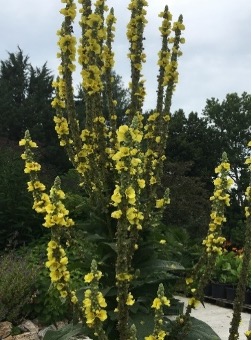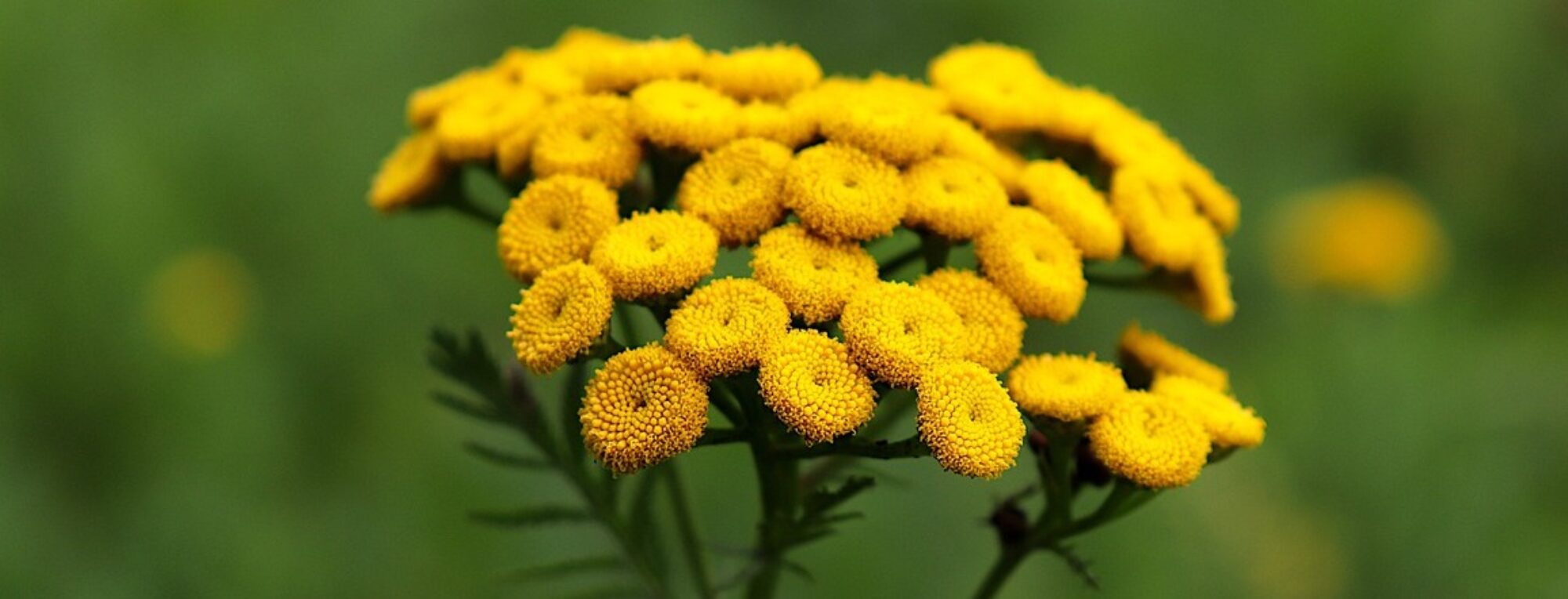
English name: Denseflower mullein
Family: Scrophulariaceae
Botanical characteristic: A powerful, biennial plant that grows to a height of 2 m. In the first year, a ground rosette of leaves is formed. In the second year, a straight, hollow, hairy stem grows. The leaves are ovate, sessile. Five large, yellow flowers grow in clusters at the top of the stem and form long spikes. The fruit is a many-seeded capsule.
Microscopic drawing:


Distribution: It occurs on the edges of roads, near railway embankments, in meadows and pastures.
Drug: Verbasci flos
Harvesting method: The flowers are collected at the time of full bloom, in the morning hours, in dry weather.
Drying: The flowers are dried in a thin layer directly in the sun (5 – 6 hours), with the possibility of drying artificially in a drying oven at a temperature of up to 55 °C. Crown flakes are fragile, yellow in color, honey smell and sweet taste.
Active substances: The flower of wild celeriac contains a large amount of mucilage and saponins, known under the name – verbascosaponin. The drug also contains iridoid glycosides and flavonoids.
Uses: The drug is traditionally used in the treatment of respiratory catarrh and cough. It has anti-inflammatory, antiviral and diuretic effects.
Traditional method of use in indications determined solely on the basis of long-term use:
– symptomatic treatment of sore throat associated with dry cough and cold.
Selected herbal preparations: AGROKARPATY DENSEFLOWER MULLEIN herbal tea 1×30 g, JUVAMED DENSEFLOWER MULLEIN – FLOWER herbal tea loose 1×20 g, Dr.Max Respiratory Tract Children’s Herbal Tea Blend, infusion bags 20×1.5 g, HERBALMED HotDrink FORTE – Dr.Weis infusion bags 12 pcs, NaturProdukt Sage Lozenges with Denseflower Mullein and Echinacea 18 pcs.
